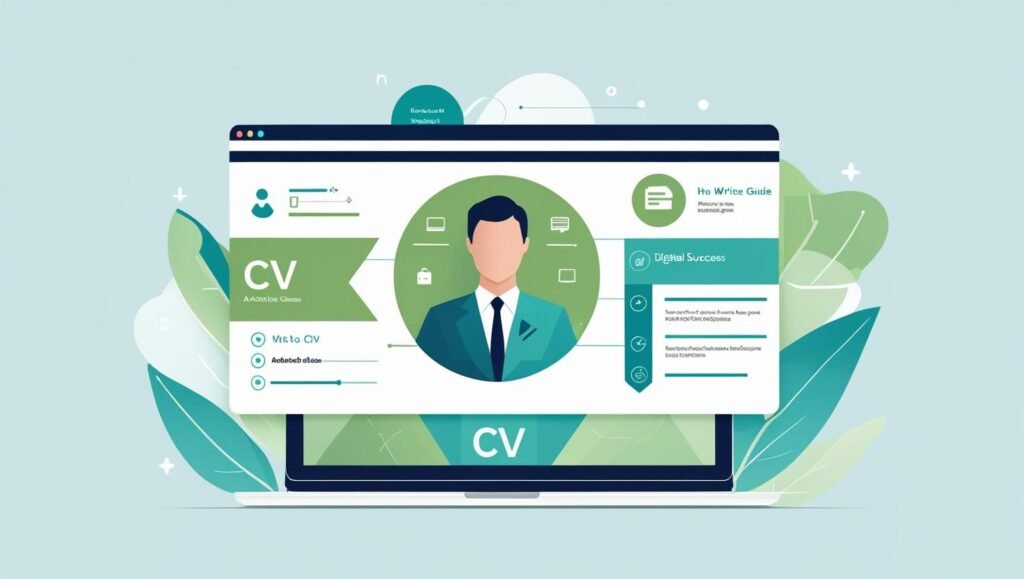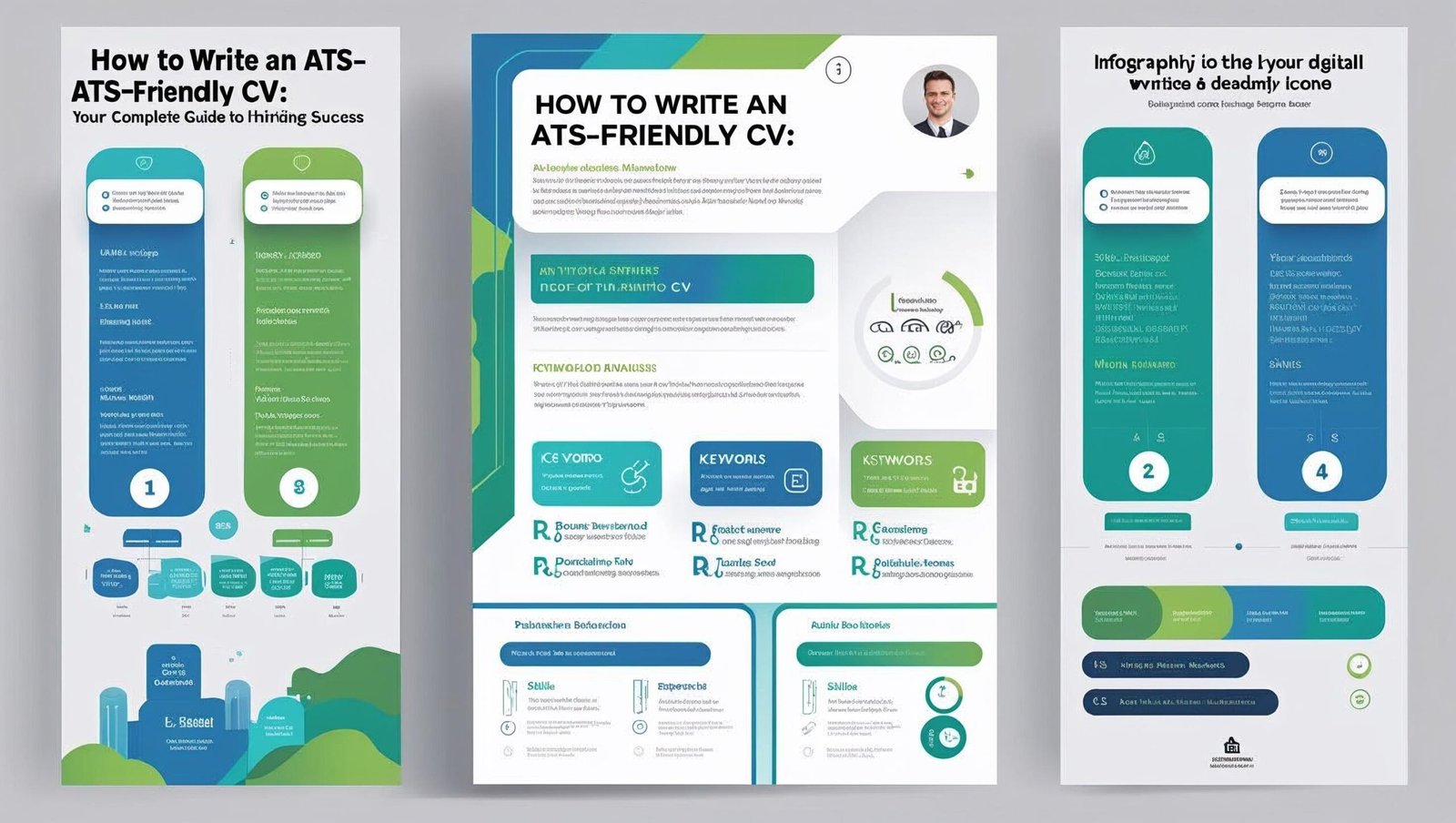Understanding the Digital Gatekeeper
In today’s job market, most applications disappear into what candidates call the “black hole”—a frustrating silence after submitting a carefully crafted CV. This isn’t random rejection; it’s the result of Applicant Tracking Systems (ATS) filtering out unoptimized resumes before human eyes ever see them.
The Reality of Modern Hiring
The numbers are stark: a single job posting receives an average of 250 applications, with high-demand sectors seeing even more. To manage this volume, 99% of Fortune 500 companies and 70% of all large companies use ATS software. These systems automatically screen applications, with studies suggesting 70% of CVs are filtered out before reaching human recruiters.

What Is an ATS?
An Applicant Tracking System is software that manages the entire recruitment process, from job posting to candidate selection. Key functions include:
- Job distribution across multiple platforms
- Resume parsing to extract and categorize information
- Keyword filtering based on job requirements
- Candidate ranking and scoring
- Interview scheduling and communication management
Understanding that ATS technology varies is crucial. Market leaders like Workday (39.2% of Fortune 500) and Greenhouse (19.3% general market) have different parsing philosophies, meaning optimization strategies must be adaptable.
How ATS Systems Process Your CV
Your CV undergoes three critical stages after submission:
1. Parsing
The system extracts information—work experience, skills, education—and organizes it into a searchable database. Complex formatting elements like graphics, tables, or unusual fonts can break this process, causing critical information to be lost or scrambled.
2. Screening
The ATS filters candidates based on predetermined criteria, primarily through keyword matching. 76.4% of recruiters search by skills, making keyword alignment the most important factor for passing initial screening.
3. Ranking
Candidates receive relevance scores based on keyword matches and other criteria. Only those meeting minimum thresholds reach human reviewers, typically narrowing hundreds of applicants down to 4-6 interview candidates.
Building an ATS-Compliant CV Structure
Choose the Right Format
Reverse-chronological format is mandatory for ATS applications. This format lists work experience from most recent to oldest, providing the predictable structure that parsing software expects. Functional or hybrid formats often confuse ATS systems, leading to misinterpreted information.
Essential Sections and Headers
Use these standard section headings—creative alternatives will break parsing scripts:
Contact Information
- Full name (first line of document)
- Professional email address
- Phone number
- City and state (full address unnecessary)
- LinkedIn profile URL
- Critical: Place in document body, never in headers/footers
Professional Summary
- 2-4 line paragraph below contact information
- Include exact job title from posting
- Front-load with 3-5 critical keywords
- State years of relevant experience
Work Experience
- Reverse-chronological order
- Include: Job title, company name, city, state, employment dates (month/year)
- 3-5 bullet points per role
- Start with action verbs
- Quantify achievements with metrics
- Weave in keywords naturally
Skills Section
- Use standard heading: “Skills,” “Technical Skills,” or “Core Competencies”
- List relevant hard skills, software, methodologies
- Group into logical categories for readability
- Mirror job description terminology exactly
Education & Certifications
- Separate sections with standard headings
- Include full degree names and universities
- List certifications with full names and acronyms
- Include issuing organizations
Mastering ATS-Friendly Formatting
The “Boring is Better” Philosophy
Visual simplicity is non-negotiable for ATS compatibility:
Layout Requirements:
- Single-column format only
- No graphics, images, or logos
- No tables, text boxes, or columns
- Standard margins (0.75-1 inch)
- Use white space for section separation
Typography Guidelines: Choose universally compatible fonts:
- Sans-serif: Arial, Calibri, Helvetica, Verdana
- Serif: Georgia, Times New Roman
- Size: 10-12pt body text, 14-16pt headings
- Maintain consistency throughout
File Format Best Practices
The Modern Standard: Most current ATS systems handle both .docx and text-based PDF files effectively. PDFs preserve formatting across devices, making them generally preferred for modern applications.
The Safety Rule: Always follow application portal instructions. When no preference is stated, submit a text-based PDF with .docx as backup. Avoid .jpg, .png, .rtf, or .pages formats.
Common Formatting Mistakes to Avoid
Mistake Why It Fails Correct Approach Contact info in header/footer ATS ignores headers/footers Place in document body Tables or columns Scrambles text during parsing Single-column layout Creative bullet points (→, ✓, ★) Read as foreign characters Use standard bullets (• or ▪) Inconsistent dates Confuses experience calculations Use “Month YYYY” format Graphics or images Unreadable by ATS Text-only documents Creative section headings Not recognized by parsing scripts Use standard headings
Content Strategy: Keywords and Customization
Keywords as Currency
Keywords are the primary mechanism for ATS filtering and ranking. They typically include:
- Job titles (exact matches from postings)
- Hard skills (software, technical abilities)
- Soft skills (leadership, communication)
- Industry terminology (methodologies, processes)
- Qualifications (certifications, degrees)
Systematic Keyword Mining
Step 1: Analyze the complete job description, focusing on “Requirements,” “Qualifications,” and “Skills” sections.
Step 2: Highlight every potential keyword, noting repeated terms (these are highest priority).
Step 3: Use exact phrasing—don’t assume ATS understands synonyms. If the posting says “financial analysis,” use that exact phrase, not “analyzing finances.”
Step 4: Include both full terms and acronyms: “Search Engine Optimization (SEO)” or “Project Management Professional (PMP).”
Strategic Integration
Avoid keyword stuffing. Instead, weave terms naturally throughout:
Professional Summary: Include target job title and 2-3 essential skills.
Skills Section: Mirror job description terminology exactly.
Work Experience: Demonstrate skills in context with quantified achievements.
Example: “Managed a portfolio of 12 enterprise software projects using Agile (Jira) methodologies, resulting in a 15% reduction in average project delivery time.”
The Master CV Strategy
Create a comprehensive “master” CV containing every detail of your professional life. For each application:
- Copy the master document
- Mine keywords from the new job description
- Rewrite the summary with new job title and keywords
- Edit work experience to emphasize relevant accomplishments
- Update skills section to match specific requirements
- Save as tailored version for submission
This transforms hours-long rewrites into focused 15-minute customization sessions.
Advanced Strategies for Competitive Advantage
Platform-Specific Optimization
Greenhouse (Tech/Startups): Presents original formatted documents to recruiters. Optimize for human readability first while maintaining keyword searchability.
Taleo/Traditional ATS (Large Corporations): Relies heavily on automated parsing and scoring. Strict formatting compliance and keyword density are more critical.
Strategy: When unsure of the ATS, optimize for traditional systems (Taleo approach) to ensure maximum compatibility.
Creative Professionals: The Two-Version Approach
ATS Version: Clean, text-focused document following all formatting rules for online submissions.
Designed Version: Visually rich portfolio piece for direct communication, networking, or interviews.
Never upload designed versions to ATS portals—they will be rejected during parsing.
Future-Proofing for AI Evolution
Next-generation ATS incorporates Natural Language Processing and predictive analytics. Prepare by focusing on:
- Quality content over keyword tricks
- Quantified achievements with clear impact
- Authentic skill demonstrations in context
- Well-written accomplishments that showcase soft skills
Testing and Final Deployment
The Plain Text Test
Convert your CV to plain text (.txt) to simulate basic ATS parsing:
- Save document as “Plain Text (.txt)”
- Open the .txt file
- Check for missing information, scrambled text, or strange characters
- Ensure logical, linear information flow
Online Scanning Tools
Use platforms like Jobscan, Resume Worded, or Skillsyncer to:
- Compare your CV against specific job descriptions
- Receive match scores and keyword analysis
- Identify missing critical terms
- Get formatting and readability feedback
Human Quality Assurance
Final proofreading is essential: 77% of hiring managers reject resumes with typos or grammatical errors.
- Read aloud to catch awkward phrasing
- Get second opinions on clarity and impact
- Use tools like Grammarly for final error checking
Conclusion: From Barrier to Gateway
The ATS has fundamentally changed job applications, but it’s not an insurmountable obstacle. It’s a predictable, rules-based system that can be navigated strategically. Success requires understanding that you’re writing for two audiences: the machine that screens and the human who decides.
Key principles for success:
- Structure correctly with reverse-chronological format and standard headings
- Format simply with single-column, text-only documents
- Optimize strategically by mining and integrating relevant keywords
- Customize thoroughly for each application
- Test rigorously before submission
By following these evidence-based strategies, you transform the ATS from a frustrating black hole into a navigable gateway to your next career opportunity. The system rewards those who understand its requirements—and with this knowledge, your well-crafted CV will consistently reach the human decision-makers who can recognize your true value.
Remember: the best ATS optimization doesn’t sacrifice quality for compliance. Instead, it enhances both technical compatibility and human appeal, creating a document that excels in our increasingly digital hiring landscape.

